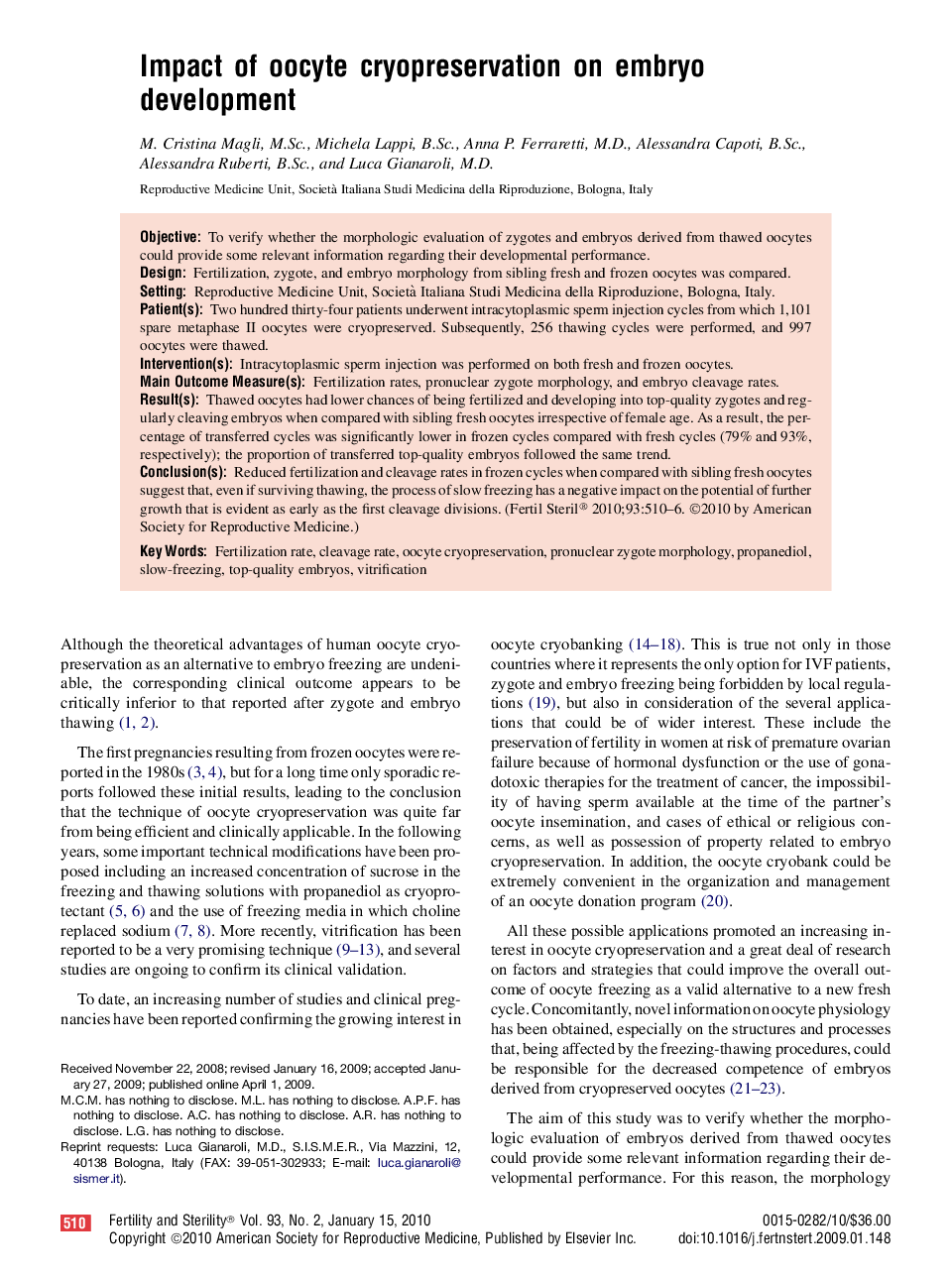| Article ID | Journal | Published Year | Pages | File Type |
|---|---|---|---|---|
| 3933666 | Fertility and Sterility | 2010 | 7 Pages |
ObjectiveTo verify whether the morphologic evaluation of zygotes and embryos derived from thawed oocytes could provide some relevant information regarding their developmental performance.DesignFertilization, zygote, and embryo morphology from sibling fresh and frozen oocytes was compared.SettingReproductive Medicine Unit, Società Italiana Studi Medicina della Riproduzione, Bologna, Italy.Patient(s)Two hundred thirty-four patients underwent intracytoplasmic sperm injection cycles from which 1,101 spare metaphase II oocytes were cryopreserved. Subsequently, 256 thawing cycles were performed, and 997 oocytes were thawed.Intervention(s)Intracytoplasmic sperm injection was performed on both fresh and frozen oocytes.Main Outcome Measure(s)Fertilization rates, pronuclear zygote morphology, and embryo cleavage rates.Result(s)Thawed oocytes had lower chances of being fertilized and developing into top-quality zygotes and regularly cleaving embryos when compared with sibling fresh oocytes irrespective of female age. As a result, the percentage of transferred cycles was significantly lower in frozen cycles compared with fresh cycles (79% and 93%, respectively); the proportion of transferred top-quality embryos followed the same trend.Conclusion(s)Reduced fertilization and cleavage rates in frozen cycles when compared with sibling fresh oocytes suggest that, even if surviving thawing, the process of slow freezing has a negative impact on the potential of further growth that is evident as early as the first cleavage divisions.
